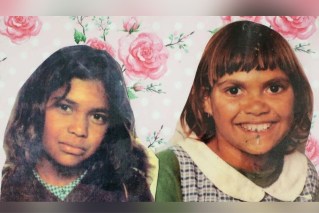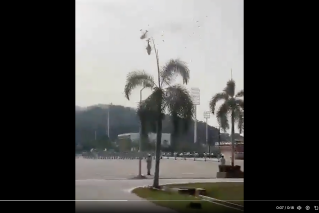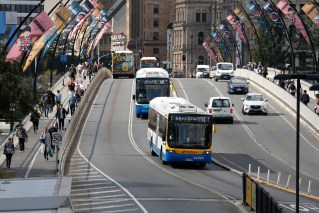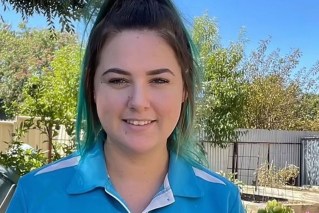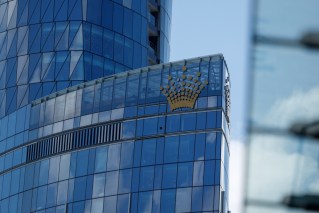‘I hope they don’t die’: Healthcare workers share son’s heartbreaking letter

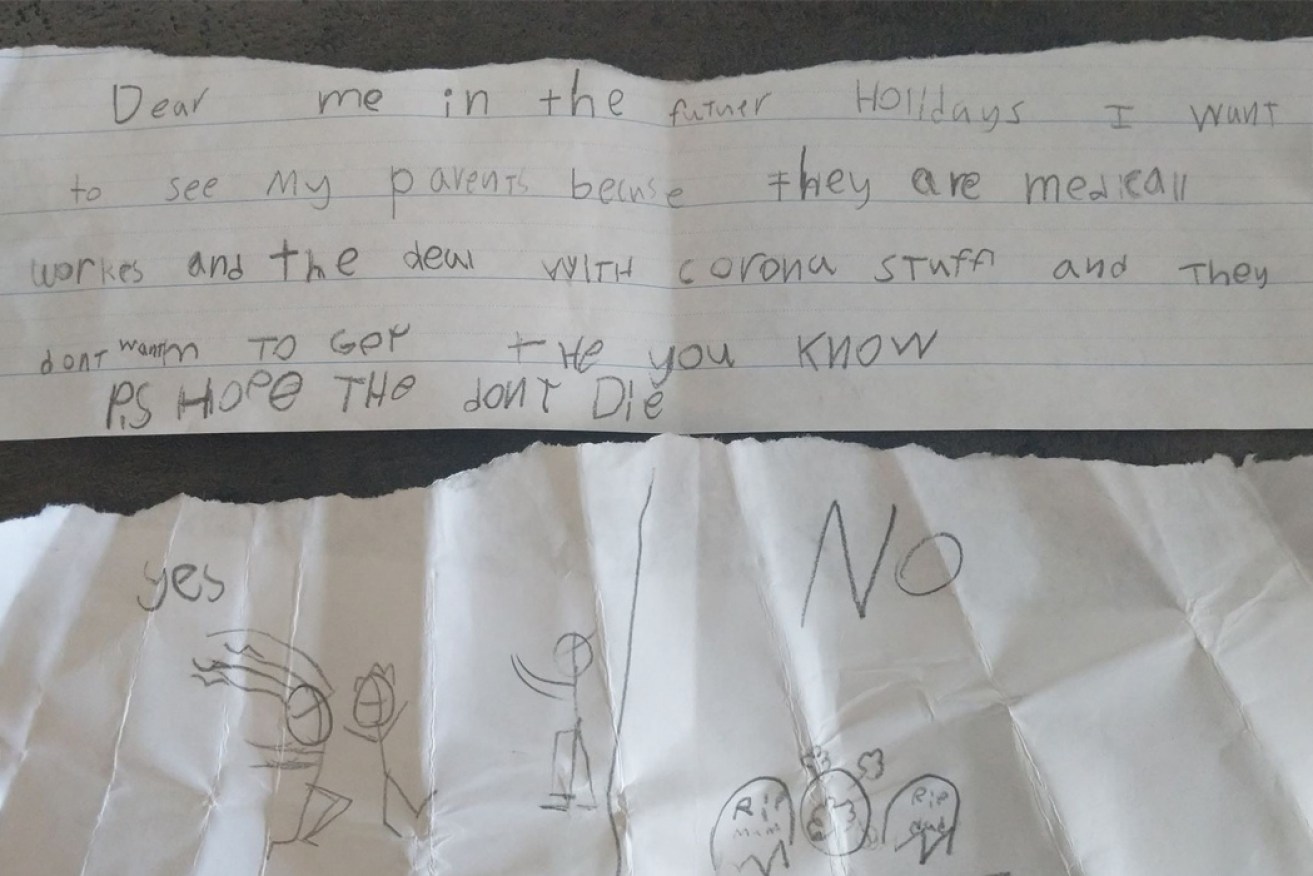
A nine-year-old boy wrote this heartbreaking letter to his future self.
Australia’s frontline healthcare workers are anxiously watching as the number of coronavirus cases among their international peers continues to rise – and their children know it.
In Italy, at least 8350 healthcare workers have tested positive to COVID-19, and in Spain they are overloaded.
Spanish officials won’t say if any healthcare workers have died, but on Friday 9444 had caught the virus.
As with the initial coronavirus outbreak in China, some of those will die.
Australia’s frontline healthcare workers also know they can’t stay home.
And one little boy’s letter shows how that is taking a toll on their families.
Em is an ICU nurse in Melbourne. Her husband is a paramedic. Their nine-year-old son knows COVID-19 threatens the lives of both his parents.
Last week, he had to write a letter to his future self for class.
“Dear me in the future holidays,” it began.
“I want to see my parents more because they are medical workers and they deal with corona stuff. They (I) don’t want them to get the ‘you know’ what.
“PS. Hope they don’t die.”

The son of two frontline workers in Melbourne wrote this note.
On the back is a picture of their little family alive with a big ‘yes’, next to a picture of two tombstones with a big ‘no’ written across the top.
“I’m sad that everything going on is causing him anxiety about his parents,” Em told The New Daily.
“He’s just always been really socially aware, so even though we’re not acting any different at home, he’s just hyper-aware.
“The stores have been emptied out and he puts it together.
“I want people to realise the effects of not social distancing, leading to more cases, is having more than just health implications as well.”
Em wants people to know that staying home means not just slowing the spread, but also that her son doesn’t “have to worry about his parents and what a future without them would be like”.
This week she visited the supermarket, trying to get hand sanitiser, but the shelves were bare.
She needs it so she can hug her son and husband when she comes home, without worry.
“If people weren’t stressing so much, and just doing social distancing properly, then it wouldn’t be as anxiety-inducing,” Em said.
“Don’t blow it up to end of days. Just be sensible. Then you don’t have kids going ‘holy crap’.”
Australia’s COVID-19 curve looks like it may be flattening, as the rate of new infections has dropped in recent days.
But infection control expert and adviser to the World Health Organisation’s COVID-19 preparedness group, UNSW professor Marylouise McLaws says there’s still much work to be done.
“We shouldn’t get overly excited yet,” Professor McLaws said.
“Epidemic curves don’t have the classic bell shape that everybody thinks they do in an outbreak.
“We need to remind ourselves that there are many countries that thought they had it under control but that was just a trough.
“Our data is a week late, that’s around easing or incubation period.
“We’re always looking back into the future. It’s like being in the Tardis – if you’re a Doctor Who fan.”
Australians should be ‘quietly pleased’ with the rate in which the virus is travelling, but still, maintain strict social distancing, she said.
“What we are doing is working. What the government is doing with border protection will have a positive impact and they should continue to do that,” Professor McLaws said.
“It’s like training for a marathon. We’re not on the home stretch yet, but with this effort we will get there.”
On Tuesday, new research by the University of Sydney found that compliance with social distancing measures is key to controlling the virus in just over three months.
“If we want to control the spread of COVID-19 – rather than letting the disease control us – at least 80 per cent of the Australian population must comply with strict social distancing measures for at least four months,” Professor Mikhail Prokopenko said.
“However, if 90 per cent of the population complies, then the duration could be as short as 13 to 14 weeks – meaning if we began tomorrow we could expect control of COVID-19 by July.
“Conversely, if less than 70 per cent of the population is adopting social distancing measures, we cannot suppress the spread of the pandemic and any social distancing could be a fruitless effort.
“There is a clear trade-off – stricter measures imposed earlier would reduce how long our lives are impacted by this disease.
“On the contrary, laxer protocols could mean a longer, more drawn-out and ineffective struggle against COVID-19.”



